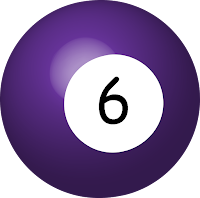Puzzle : An Evil Troll on A Bridge
A bridge was guarded by an evil troll. The troll was very intelligent,
but he was also a coward. He was afraid of anyone smarter than him. So
every time anyone tried to cross the bridge, the troll would set up a
test. If the traveler passed the test, he would be allowed to cross.
Otherwise, the troll would eat him.
A traveler came across the bridge.
The troll said, "You may only cross my bridge if you know the password."
He then wrote thirteen pairs of letters on a rock:
A-V
B-W
C-Q
D-M
E-K
F-U
G-N
H-P
I-O
J-R
L-X
S-T
Y-Z
"These thirteen pairs consist of all 26 letters of the alphabet," said the troll.
"The password contains thirteen letters, no two of which are the same. Each pair consists of one letter that is in the password and one other letter. If you wrote out the "other" letters in alphabetical order and then wrote each "password" letter under each one's corresponding "other" letter, you would have the correct spelling of the password."
Then the troll wrote five short words on the rock: FACE, QUEST, QUICK, SWITCH, and WORLD.
"Each short word contains exactly the same number of letters with the password," he said.
So, what is the password?
A traveler came across the bridge.
The troll said, "You may only cross my bridge if you know the password."
He then wrote thirteen pairs of letters on a rock:
A-V
B-W
C-Q
D-M
E-K
F-U
G-N
H-P
I-O
J-R
L-X
S-T
Y-Z
"These thirteen pairs consist of all 26 letters of the alphabet," said the troll.
"The password contains thirteen letters, no two of which are the same. Each pair consists of one letter that is in the password and one other letter. If you wrote out the "other" letters in alphabetical order and then wrote each "password" letter under each one's corresponding "other" letter, you would have the correct spelling of the password."
Then the troll wrote five short words on the rock: FACE, QUEST, QUICK, SWITCH, and WORLD.
"Each short word contains exactly the same number of letters with the password," he said.
So, what is the password?















